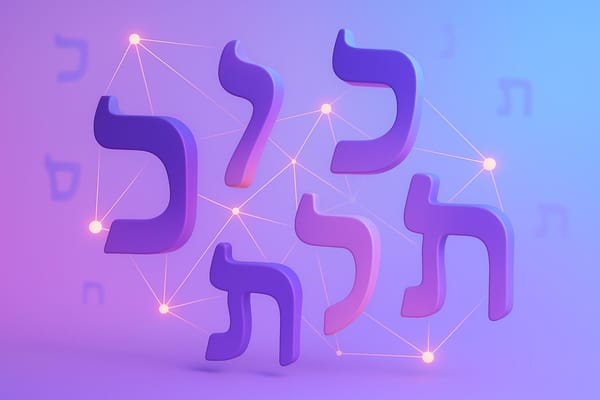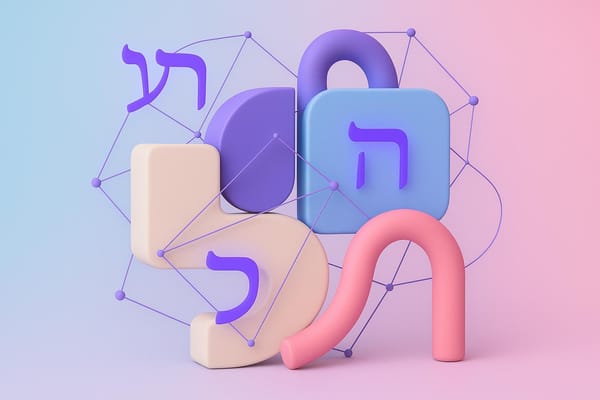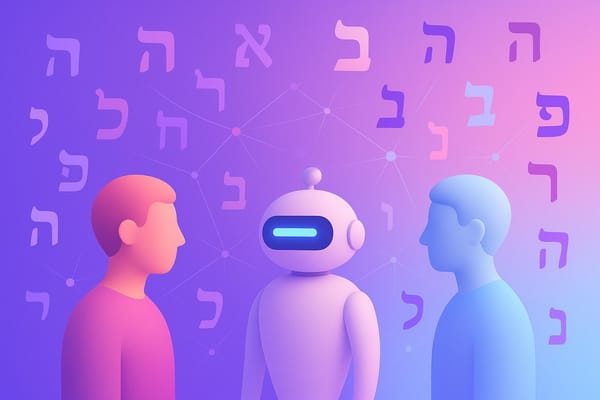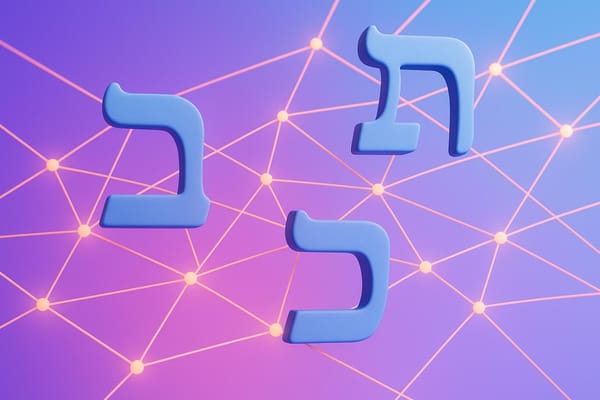How AI Handles Hebrew Proverbs
Explore the challenges AI faces in translating Hebrew proverbs and how new tools aim to improve accuracy and cultural understanding.
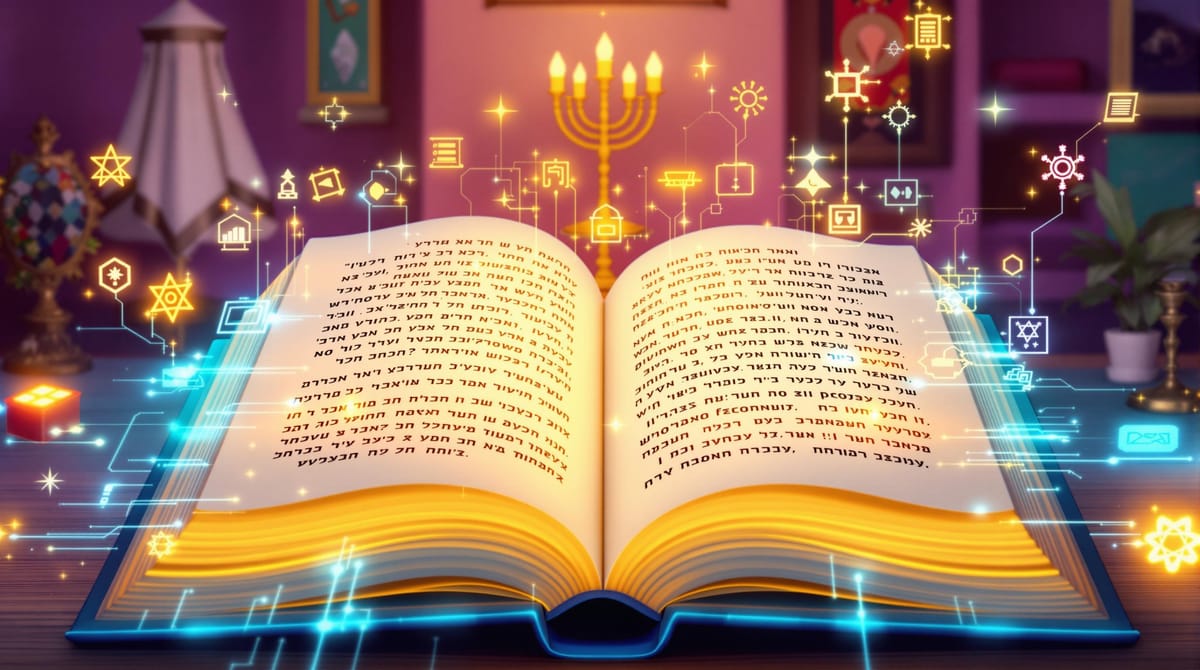
AI struggles with translating Hebrew proverbs due to their complex language, cultural depth, and gendered grammar. Here’s a quick breakdown of the key challenges and how tools like baba aim to solve them:
- Cultural Context: AI often misses historical and cultural nuances, leading to incomplete translations.
- Gendered Grammar: Hebrew requires precise gender agreement, but AI defaults to masculine forms 70% of the time.
- Idiomatic Expressions: Literal translations fail to capture deeper meanings.
- Verbal Roots: Misinterpreting Hebrew’s three-consonant root system leads to inaccuracies.
baba, a new AI tool, addresses these issues by focusing on gender accuracy, cultural understanding, and grammatical precision, making it a promising solution for translating Hebrew proverbs while preserving their meaning.
Join the waitlist for baba to experience better Hebrew translations.
How To Use ChatGPT As A Hebrew Translator
AI Methods for Hebrew Proverb Translation
Modern AI systems use advanced techniques to handle the challenges of translating Hebrew proverbs. By combining linguistic tools with cultural insights, they aim to deliver translations that are both accurate and meaningful.
Understanding Context and Meaning
AI relies on Natural Language Processing (NLP) to delve into the layers of Hebrew proverbs. These tools analyze both literal and metaphorical meanings to ensure the full essence of an expression is captured. As Jonathan Robie points out:
"NLP can rapidly create results that are often good, these results still need to be verified and edited by human beings before they can be considered trustworthy."
This underscores the need for human oversight to refine AI-generated translations. Hebrew's unique three-consonant root system is a key focus for AI, allowing it to explore the broad semantic range of words and preserve both literal and figurative meanings. Additionally, AI must navigate Hebrew's complex grammatical structures, including its gendered language system.
Managing Gender and Grammar Rules
Hebrew grammar adds another layer of complexity, with gendered forms requiring AI to process four variations for each word. This includes singular and plural forms for both masculine and feminine cases. Ensuring grammatical agreement across nouns, verbs, and adjectives is critical for accurate translations.
Preserving Original Meaning
Maintaining the integrity of Hebrew proverbs involves more than just linguistic accuracy - it also requires cultural sensitivity. Translator Jessica Cohen explains:
"I think of Hebrew as a 'depth language,' as opposed to English, which is a 'breadth language.'"
Her insight highlights the importance of semantic depth in accurately capturing the layered meanings of Hebrew proverbs. Modern Large Language Models (LLMs) further improve translation by performing alignment checks to ensure consistency between the original and translated text.
Measuring AI Translation Quality
Evaluating how AI translates Hebrew proverbs involves more than just technical accuracy. It also requires understanding cultural nuances to ensure translations are both precise and contextually appropriate.
Translation Accuracy Standards
Assessing AI's translations of Hebrew proverbs involves looking at three key areas: linguistic precision, cultural relevance, and gender accuracy. Research on GPT-3.5's performance with Hebrew texts has uncovered challenges, particularly with verb conjugation and identifying word roots [1]. Additionally, studies show a persistent gender bias - only 30% of feminine translations are rendered correctly [2].
| Assessment Dimension | What’s Measured | Translation Issues |
|---|---|---|
| Linguistic Accuracy | Verb conjugation, root identification | Struggles with Hebrew's root system |
| Gender Handling | Proper gender assignment, context recognition | Tendency toward masculine defaults |
| Cultural Context | Nuances and cultural relevance | Often misses subtle cultural meanings |
Gender accuracy is a recurring issue, as AI often defaults to masculine forms, failing to account for proper grammatical agreement. These problems highlight the need for improvements in AI systems to better handle Hebrew's unique linguistic and cultural characteristics.
Translation Case Studies
Looking at specific examples sheds light on how AI performs under different circumstances. Professor Orly Lobel notes that AI often exaggerates gender biases when translating from gender-neutral languages into gendered ones [2].
AI tends to perform well with simple translations but struggles with more complex proverbs. For instance, culturally rich expressions often lose their deeper meaning without human intervention. This gap has driven the creation of advanced tools aimed at addressing Hebrew's specific linguistic challenges, focusing on both technical precision and maintaining cultural depth.
baba: Advanced Hebrew Translation

baba takes on the challenges of translating Hebrew, particularly when it comes to proverbs, by offering a better way to handle the unique aspects of the language. It focuses on solving common problems like gender accuracy and understanding cultural context - issues that many AI translation tools often get wrong.
baba's Context Recognition System
What makes baba stand out is its ability to handle Hebrew's complex grammar. Hebrew requires nouns, verbs, and adjectives to match in gender and number, a detail many tools overlook by defaulting to masculine forms. baba ensures these grammatical rules are followed while also respecting cultural context. This means translations stay true to the original meaning, especially for Hebrew proverbs, which often lose their essence with other tools.
Using baba in Practice
Whether you're working in a professional setting or having casual conversations, baba adjusts to the tone and style you need. It combines formal accuracy with an understanding of Hebrew's cultural layers, delivering translations that are both precise and meaningful. This makes it a great option for anyone looking for high-quality translations that don't sacrifice depth or authenticity.
Get on the Waitlist for baba's App

AI tools today often fall short when it comes to Hebrew grammar [1], and baba directly addresses these gaps. For example, it targets the 70% gender bias found in existing tools [2], offering translations that are more accurate and culturally sensitive. The app is designed to handle Hebrew's unique challenges while staying true to the essence of traditional sayings, making it a valuable resource for users.
Next Steps in AI Translation
AI translation tools have come a long way, but they still struggle with complex tasks like translating Hebrew proverbs. These challenges underline the growing need to blend machine efficiency with human insight.
Current AI Limitations
AI translation tools often fall short when it comes to interpreting cultural nuances and context. While simpler language pairs can reach up to 90% accuracy, expressions rich in cultural meaning - like Hebrew proverbs - frequently lose their essence. These gaps highlight the need for better solutions to balance linguistic accuracy with cultural understanding.
Advances in Translation Technology
Recent developments aim to address challenges like cultural sensitivity, idiomatic phrases, emotional undertones, and gender-specific grammar - essential for translating Hebrew proverbs. For example, Google Translate now offers gender-specific translations for Hebrew, tackling some of the language's grammatical complexities. Despite these improvements, human expertise is still critical for capturing deeper meanings.
Combining AI and Human Translation
The best approach to translating Hebrew proverbs combines AI's efficiency with human expertise. As Gary Marcus, CEO of Robust.AI, explains:
"No current AI is remotely close to understanding the everyday physical or psychological world, what we have now is an approximation to intelligence, not the real thing, and as such it will never really be trustworthy."
This hybrid method uses AI for speed and pattern recognition while relying on humans to handle cultural and contextual subtleties. This approach has already led to a 60% increase in adoption by organizations aiming to balance speed with meaningful, accurate translations. For Hebrew proverbs, where meaning often goes beyond the surface, this collaboration ensures the output is both precise and culturally rich.
Conclusion: AI Progress in Hebrew Translation
Key Takeaways
AI's ability to translate Hebrew proverbs highlights a major step forward in language technology. Translating Hebrew has always been tricky due to its layered cultural meanings and intricate grammar. TAUS's 2022 study revealed that AI translation systems now come within a 5% margin of human translators in technical areas. This is a big deal for Hebrew, where gendered grammar and cultural subtleties have historically made machine translation a tough challenge.
One platform making waves in this field is baba, leading the charge in Hebrew translation advancements.
Why baba Stands Out
Unlike older tools that stumble over Hebrew's gendered grammar and idiomatic expressions, baba tackles these challenges head-on with impressive accuracy. Here's what sets it apart:
| Feature | Advantage |
|---|---|
| Context and Cultural Understanding | Delivers translations that are accurate and culturally appropriate |
| Handling Gendered Grammar | Navigates Hebrew's gender and plural complexities with ease |
| Instant Processing | Provides quick translations without compromising quality |
baba combines AI's speed with a deep appreciation for Hebrew's cultural richness. It captures the essence of Hebrew proverbs while ensuring grammatical precision, making it a go-to tool for anyone working with or exploring Hebrew culture.
Interested in trying baba? The platform's mobile app waitlist is now open at www.itsbaba.com.


